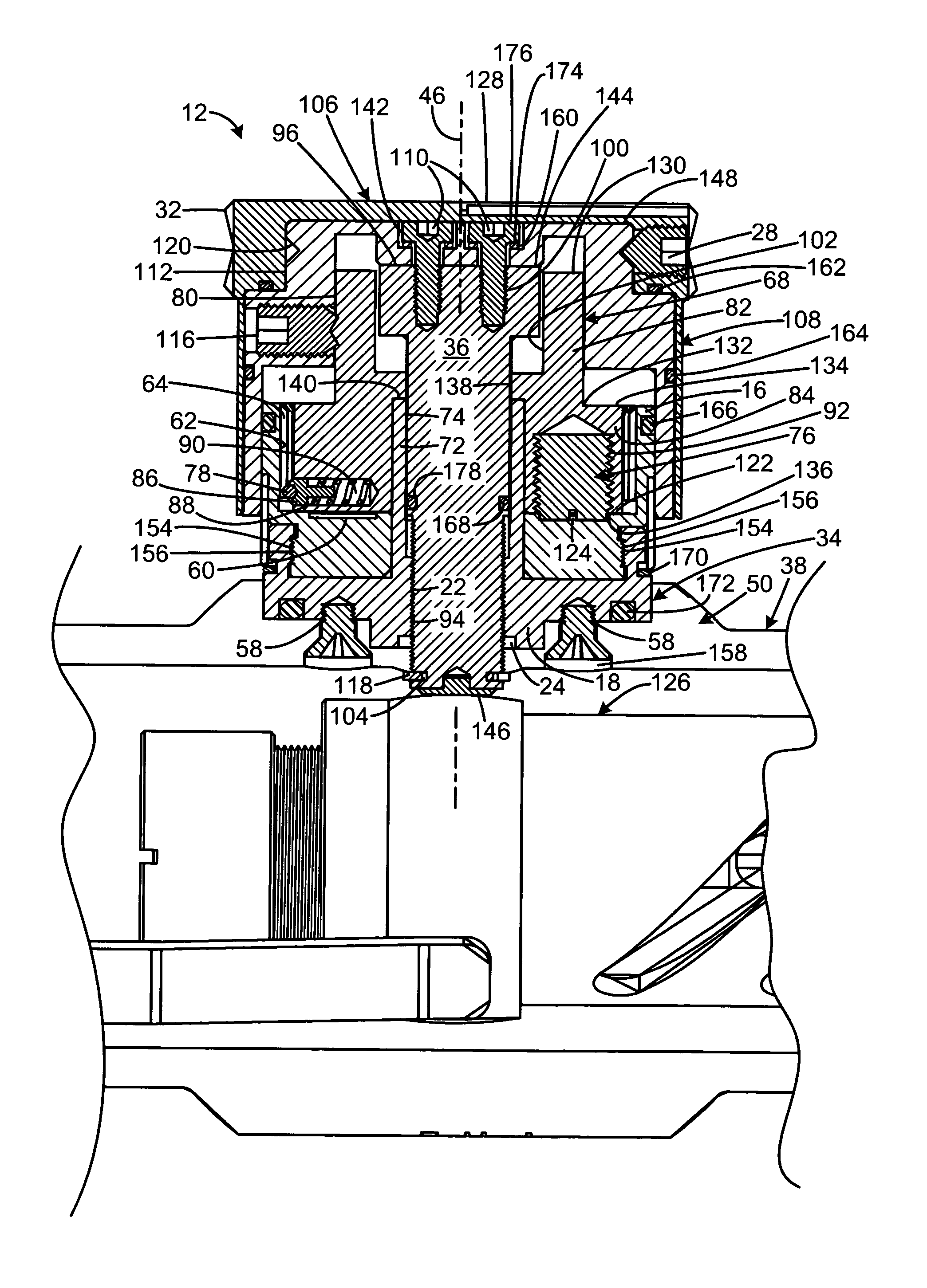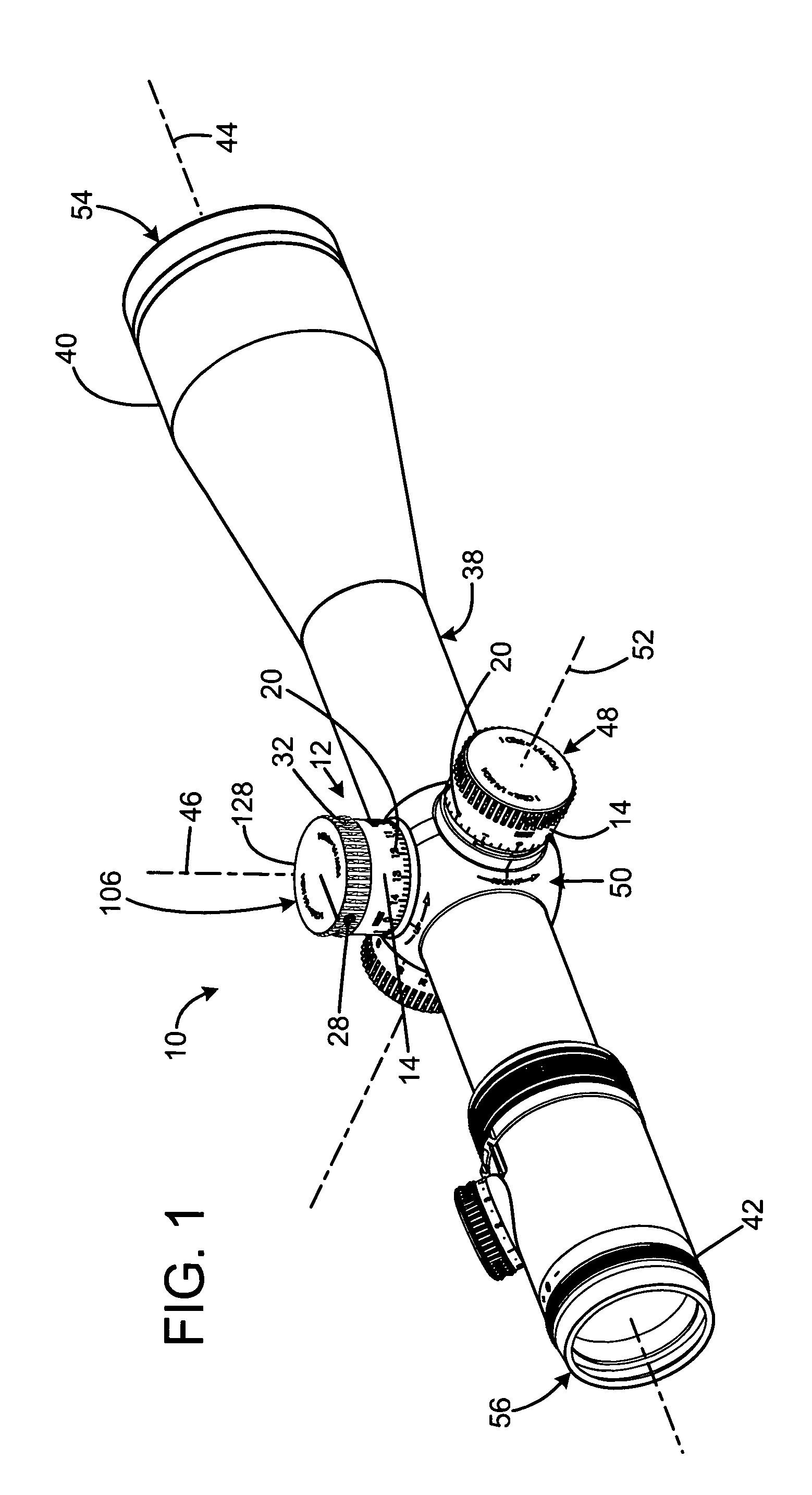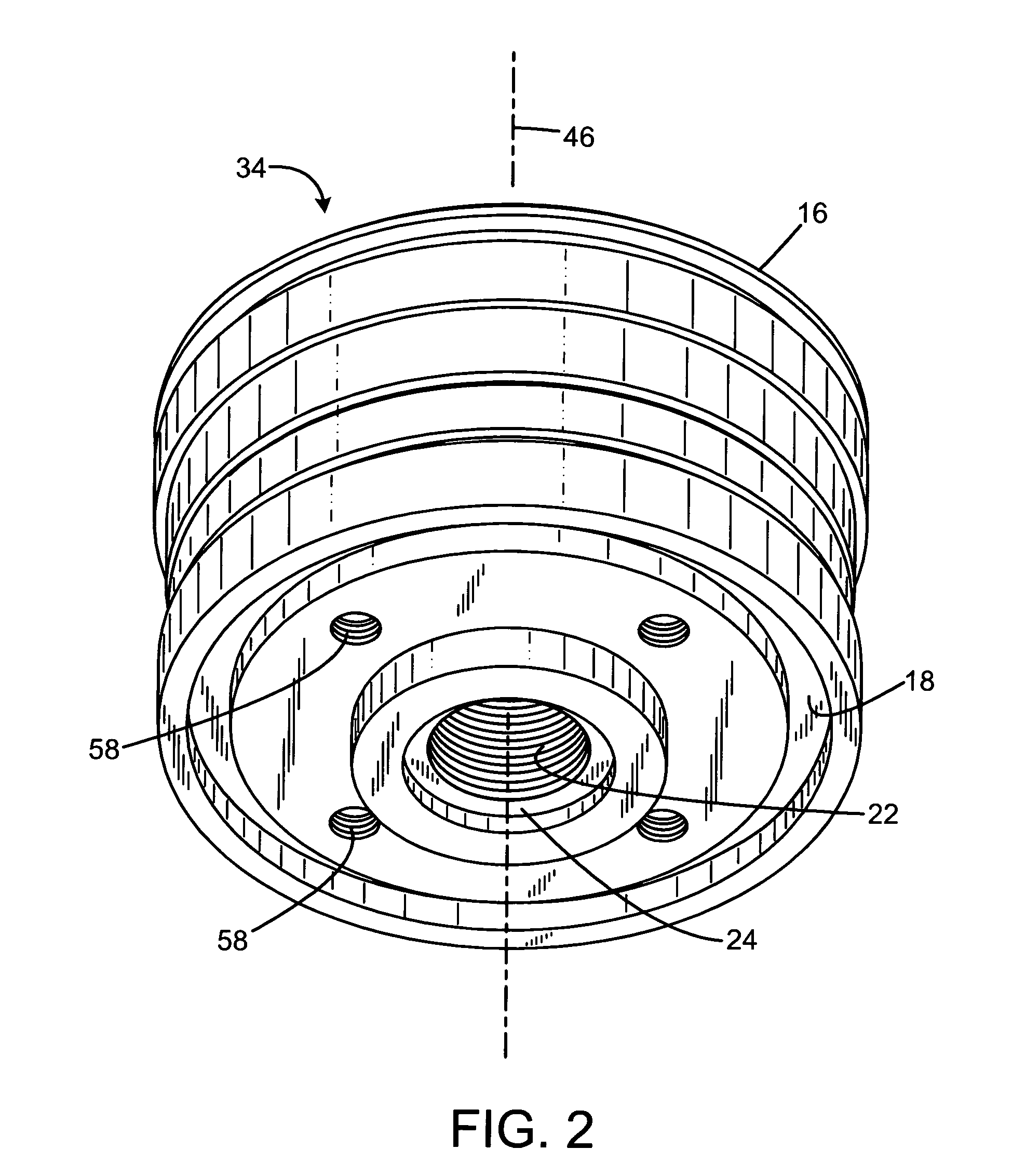Rifle scope with adjustment stop
a technology of a scope and an adjustment stop, which is applied in the direction of telescopes, instruments, weapons, etc., can solve the problems of easy loss of zero point when elevation is dialed, insufficient markings, and easy loss of the adjustment track of the user to return to zero point, so as to improve the appreciation of the contribution of the art
- Summary
- Abstract
- Description
- Claims
- Application Information
AI Technical Summary
Benefits of technology
Problems solved by technology
Method used
Image
Examples
Embodiment Construction
[0028]A preferred embodiment of the rifle scope with adjustment stop of the present invention is shown and generally designated by the reference numeral 10.
[0029]FIG. 1 illustrates the improved rifle scope with adjustment stop 10 of the present invention. More particularly, the rifle scope 10 has a scope body 38 that encloses a movable optical element 126 (shown in FIG. 8), which is an erector tube. The scope body 38 is an elongate tube tapering from a larger opening at its front 40 to a smaller opening at its rear 42. An eyepiece 56 is attached to the rear of the scope body, and an objective lens 54 is attached to the front of the scope body. The center axis of the movable optical element defines the optical axis 44 of the rifle scope.
[0030]An elevation turret 12 and a windage turret 48 are two knobs in the outside center part of the scope body 38. They are marked in increments by indicia 20 on their perimeters 14 and are used to adjust the elevation and windage of the movable opti...
PUM
 Login to View More
Login to View More Abstract
Description
Claims
Application Information
 Login to View More
Login to View More - R&D
- Intellectual Property
- Life Sciences
- Materials
- Tech Scout
- Unparalleled Data Quality
- Higher Quality Content
- 60% Fewer Hallucinations
Browse by: Latest US Patents, China's latest patents, Technical Efficacy Thesaurus, Application Domain, Technology Topic, Popular Technical Reports.
© 2025 PatSnap. All rights reserved.Legal|Privacy policy|Modern Slavery Act Transparency Statement|Sitemap|About US| Contact US: help@patsnap.com



